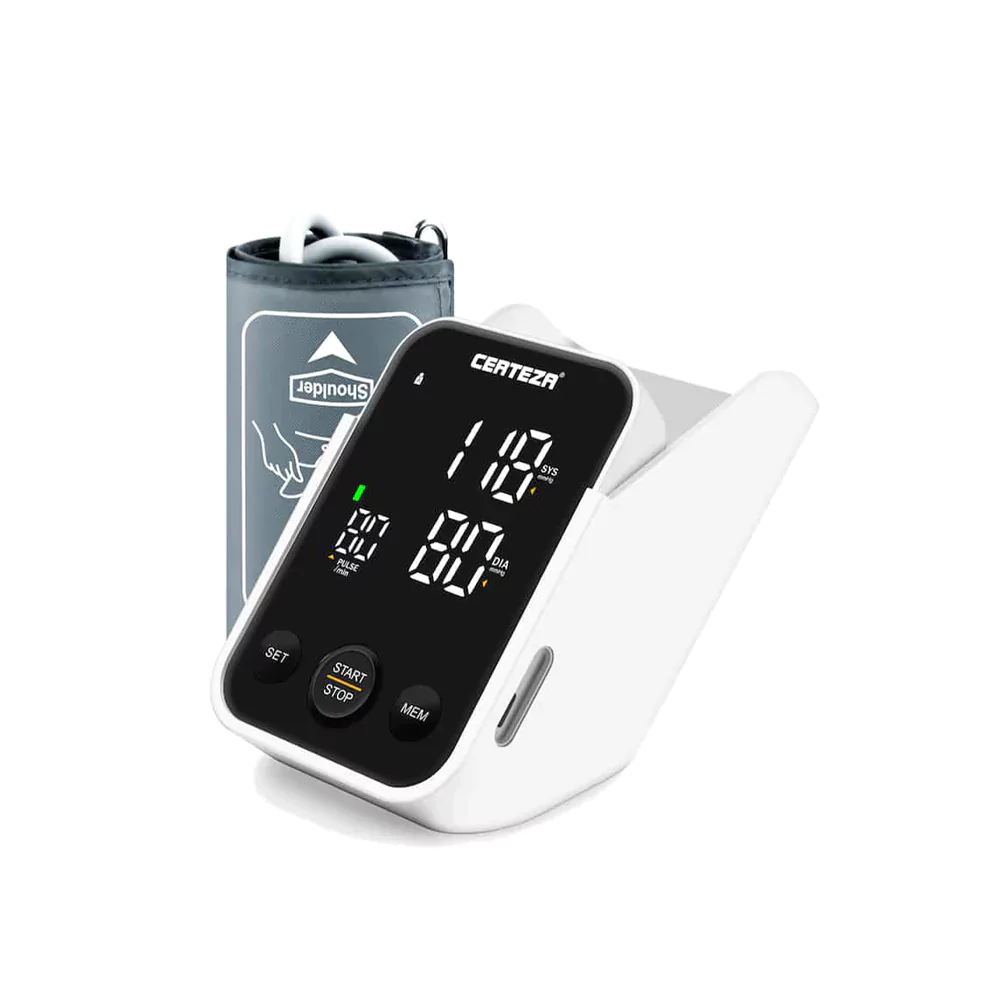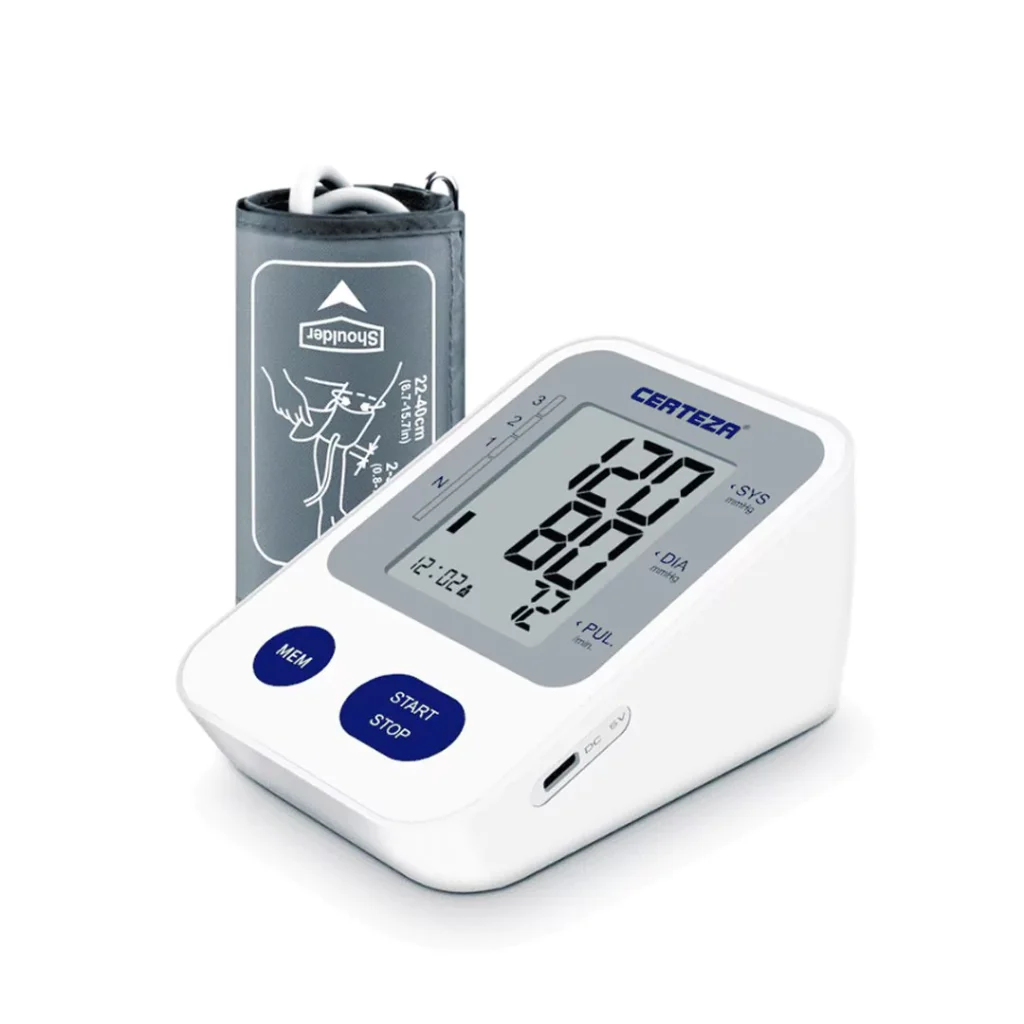- Your cart is empty
- Continue Shopping
Manual BP Monitoring: How to Check Your Blood Pressure Without a Machine

Monitoring your blood pressure is crucial for maintaining good health, especially if you have a history of hypertension or other cardiovascular issues. While electronic blood pressure machines are widely available, there might be situations where you don’t have access to one. In such cases, manually checking your blood pressure can be a lifesaver. This article will guide you through manual blood pressure monitoring, explaining each step to ensure accurate results.
Table of Contents
Understanding Blood Pressure
Blood pressure is the force exerted by circulating blood against the walls of the body’s arteries. It is measured in millimetres of mercury (mmHg). It is recorded as two numbers: systolic pressure (the pressure when the heart beats) over diastolic pressure (the pressure when the heart rests between beats). For example, a regular bp reading might be 120/80 mmHg.
Why Manual Monitoring?
Manual blood pressure monitoring can be helpful in various scenarios:
- Lack of access to an electronic blood pressure machine.
- Need for a secondary verification method.
- Educational purposes for medical students or healthcare professionals.
- Situations where battery-operated devices fail or are unavailable.
Tools Needed for Manual Blood Pressure Monitoring
To manually monitor your bp, you will need the following tools:
- Stethoscope: Used to listen to the blood flow sounds.
- Sphygmomanometer: An inflatable cuff to wrap around your arm and a gauge to read the pressure.
- Chair and Table: For comfortable positioning.
Stethoscope
The stethoscope is an essential tool for manual blood pressure monitoring. It helps you hear the Korotkoff sounds, which are the sounds of blood flow in the arteries. These sounds are crucial for determining systolic and diastolic pressures.
Sphygmomanometer
The sphygmomanometer consists of an inflatable cuff, a bulb to pump air into the cuff, and a gauge to measure the pressure. There are two types: aneroid (dial) and mercury. Both types are effective, but aneroid devices are more common and easier to handle.

Preparing for Blood Pressure Measurement
Proper preparation ensures accurate blood pressure readings. Here are the steps you need to follow:
Relax and Rest
Before measuring your blood pressure, it’s essential to relax. Sit quietly for at least 5 minutes. Avoid caffeine, exercise, and smoking for at least 30 minutes before taking your measurement.
Proper Positioning
Sit on a chair with your back straight and supported. Place your feet flat on the floor and rest your arm on a table at heart level. Ensure the cuff is wrapped snugly around your upper arm, with the cuff’s lower edge about an inch above the bend of your elbow.
The Measurement Process
Manually measuring blood pressure involves inflating the cuff, listening for blood flow sounds, and reading the gauge. Here’s a step-by-step guide:
Step 1: Inflate the Cuff
Close the valve on the bulb and pump it to inflate the cuff. Continue pumping until the gauge reads 30 mmHg above your normal systolic pressure (if known) or up to 180 mmHg if unknown.
Step 2: Listen for the Korotkoff Sounds
Place the stethoscope’s earpieces in your ears and position the diaphragm over the brachial artery below the cuff. Slowly release the valve to let air out of the cuff. Listen carefully for the first Korotkoff sound (a clear tapping sound). It indicates the systolic pressure.
Step 3: Determine the Systolic Pressure
Note the reading on the gauge when you hear the first Korotkoff sound. It is your systolic pressure. Continue to release air slowly.
Step 4: Determine the Diastolic Pressure
Keep listening as the sounds change in quality and eventually disappear. Note the reading on the gauge when you hear the last Korotkoff sound (when the tapping sound disappears). It is your diastolic pressure.
Step 5: Record the Readings
Record both the systolic and diastolic readings. For example, if the first sound was 120 mmHg and the last was 80 mmHg, your blood pressure is 120/80 mmHg.
Tips for Accurate Readings
Ensuring accurate blood pressure readings is essential. Here are some tips to help you:
Repeat the Measurement
For the most accurate results, take two or three readings, each a few minutes apart, and average them. It accounts for any variability and ensures a more precise measurement.
Avoid Talking and Movement
Remain still and silent during the measurement process. Talking or moving can affect the accuracy of the readings.
Measure at the Same Time Daily
Consistency is key. Measure your blood pressure simultaneously daily, ideally in the morning, to accurately track trends.
Common Errors and How to Avoid Them
Understanding common errors can help you avoid them and ensure accurate readings.
Incorrect Cuff Size
Using a too small or too-large cuff can result in inaccurate readings. Ensure the cuff fits snugly and is the correct size for your arm.
Improper Cuff Placement
Ensure the cuff is placed in the correct position on your arm. The lower edge should be about an inch above the bend of your elbow.
Rapid Deflation
Releasing the valve too quickly can cause inaccurate readings. Deflate the cuff slowly and steadily to ensure precise measurements.
Interpreting Your Blood Pressure Readings
Understanding your blood pressure readings is crucial for managing your health. Here’s how to interpret the numbers:
Normal Blood Pressure
A regular reading is typically around 120/80 mmHg. Consistently lower or higher readings indicate health issues.

Hypertension
High blood pressure (hypertension) is generally defined as a reading of 140/90 mmHg or higher. It requires medical attention and lifestyle changes.
Hypotension
Low blood pressure (hypotension) is generally defined as a reading below 90/60 mmHg. It can cause dizziness and fainting and might require medical evaluation.
When to Seek Medical Advice
While manual blood pressure monitoring is helpful, it is not a substitute for professional medical advice. Seek medical attention if you:
Experience High Readings
Consistently high readings (140/90 mmHg or higher) require medical evaluation and management.
Feel Symptoms
If you experience symptoms such as severe headache, chest pain, shortness of breath, or fainting, seek immediate medical attention.
Benefits of Manual Blood Pressure Monitoring
Manual blood pressure monitoring has several benefits:
Cost-Effective
Manual monitoring is a cost-effective method, especially if you don’t have access to electronic devices.
Educational
Learning to monitor blood pressure manually is educational and can increase your understanding of cardiovascular health.
Backup Method
It serves as a reliable backup method in case of electronic device failure.
Conclusion
Manual blood pressure machine price in pakistan is a valuable skill that can help you keep track of your cardiovascular health, especially when electronic devices are unavailable. You can achieve accurate readings by understanding the tools needed, preparing correctly, following the correct measurement process, and avoiding common errors. While manual monitoring is beneficial, it should differ from regular check-ups with your healthcare provider. Maintaining regular medical consultations and following their advice is essential for effectively managing your blood pressure and overall health.

